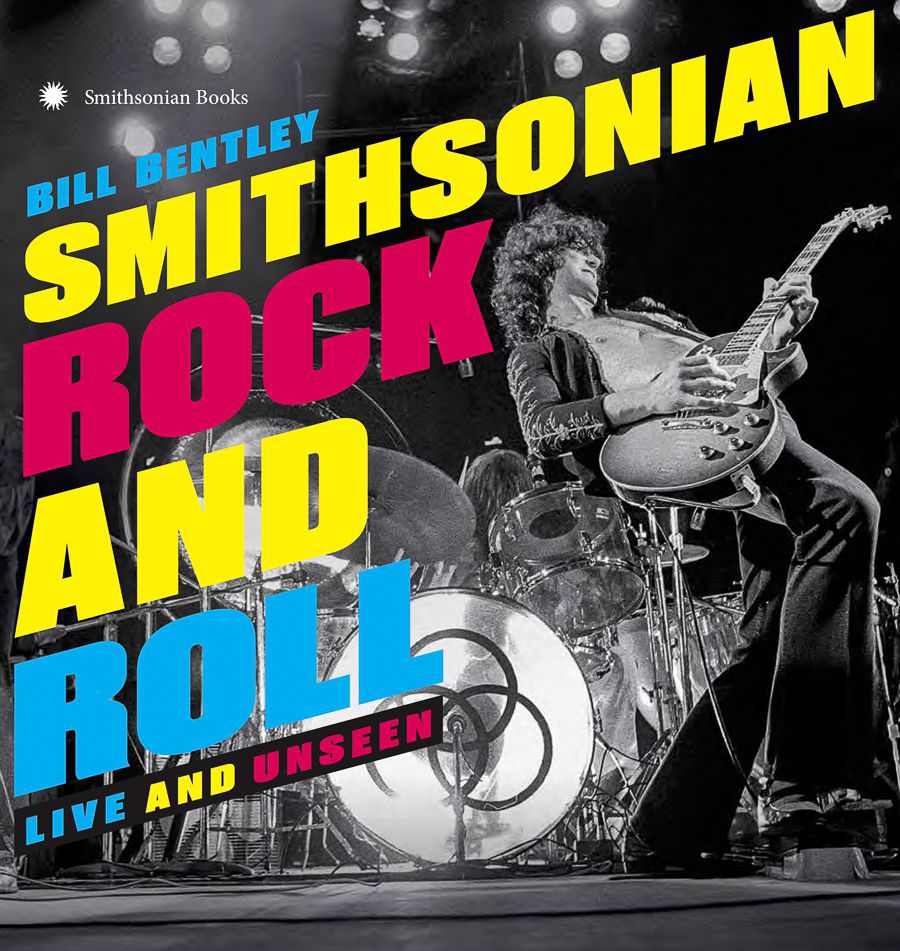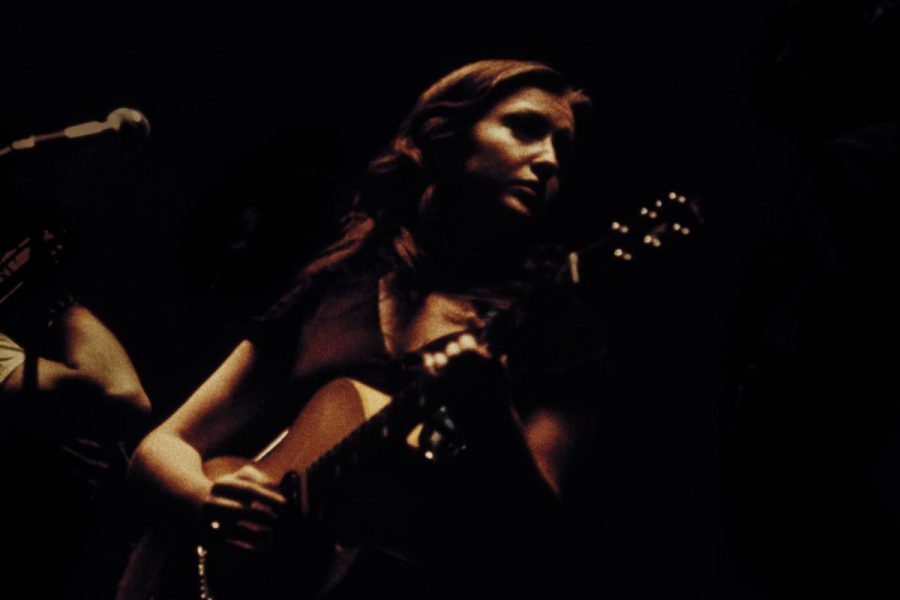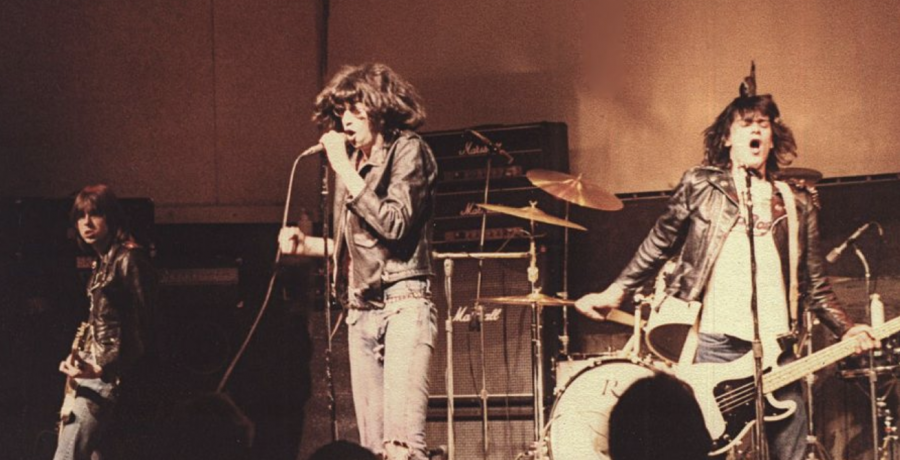[Most Recent Entries] [Calendar View]
Thursday, October 5th, 2017
| Time | Event |
| 8:00a | The Smithsonian Presents a Gallery of 6,000+ Rare Rock ‘n Roll Photos on a Crowdsourced Web Site, and Now a New Book
Many of the contributions now live on a crowdsourced website. And a resulting book Smithsonian Rock and Roll: Live and Unseen collects the best of these in a chronological history of the genre, from post-war blues to the late 20th century. It will be officially released on October 24, though you can pre-order now. Websites Mashable and Dangerous Minds present a selection of photos from the book, such as a shot of Sly Stone at the height of his powers (and belt buckle size), a pic of the Talking Heads on stage in Berkeley, 1977; a dark and mysterious glimpse of Bonnie Raitt, circa 1974; and a shot of Cream playing the Chicago Coliseum taken from the side of the stage, with Ginger Baker’s head a complete blur. Also find Joni Mitchell at Kleinhans Music Hall. And The Ramones in Tempe, Arizona, circa 1978.
Bonnie Raitt at the Harvard Square Theatre, by Barry Schneier/Smithsonian Books It’s a reminder of how unpretentious these live shows could be, happening in a world with the simplest of lighting rigs and decades from the big screen projections even up-and-coming bands now indulge in. For the most part, this was an intimate contract between the artist and the audience, all crammed into small clubs with smoke, sweat, heat, and, most importantly, electricity in the air. The new book also features tales from the people who took the photos, along with some more professional photos to “flesh out this overview of rock and roll,” according to the introduction by organizer Bill Bentley. He adds: "The results, spanning six decades, aim for neither encyclopedic authority nor comprehensive finality, but rather an index of supreme influence."
The Ramones in Tempe, Arizona, by Dorian Boese/Smithsonian Books That supreme influence continues to be felt, for sure. Although the submission window is now closed, the Smithsonian's website allows you to look through the hundreds of submissions to the project. Related Content: UC Santa Cruz Opens a Deadhead’s Delight: The Grateful Dead Archive is Now Online Beatles, Friends & Family: Photos by Linda McCartney Ted Mills is a freelance writer on the arts who currently hosts the FunkZone Podcast. You can also follow him on Twitter at @tedmills, read his other arts writing at tedmills.com and/or watch his films here. The Smithsonian Presents a Gallery of 6,000+ Rare Rock ‘n Roll Photos on a Crowdsourced Web Site, and Now a New Book is a post from: Open Culture. Follow us on Facebook, Twitter, and Google Plus, or get our Daily Email. And don't miss our big collections of Free Online Courses, Free Online Movies, Free eBooks, Free Audio Books, Free Foreign Language Lessons, and MOOCs. |
| 11:00a | How Marilyn Monroe Helped Break Ella Fitzgerald Into the Big Time (1955) Think of movie stars, and you'll almost certainly think of Marilyn Monroe; think of jazz singers, and you'll almost certainly think of Ella Fitzgerald. Their skills as performers, their inherent iconic qualities, the time of the mid-twentieth century in which they rose to fame, and other factors besides, have ensured that these two women still define the images of their respective crafts. But before their ascension to cultural immortality, the Angeleno Monroe and the New Yorker Fitzgerald's paths crossed down here on Earth in 1955, and, when they did, the movie star played an integral role in breaking the jazz singer into the big time. If you wanted to play to an influential crowd in Hollywood back in the 1950s, you had to play the Mocambo, the Sunset Strip nightclub frequented by the likes of Clark Gable, Humphrey Bogart, Lana Turner, Bob Hope, Sophia Loren, and Howard Hughes. But at the time, a singer of the reputedly scandalous new music known as jazz didn't just waltz onto the stage of such a respectable venue, especially given the racial attitudes of the time. But as luck would have it, Fitzgerald found an advocate in Monroe, who, "tired of being cast as a helpless sex symbol, took a break from Los Angeles and headed to New York to find herself," writes the Independent's Ciar Byrne. There Monroe "immersed herself in jazz," recognizing in Fitzgerald "the creative genius she herself longed to possess." Together with Fitzgerald's manager, jazz impresario and Verve Records founder Norman Granz, Monroe pressured the glamorous Hollywood club to book Ella. "I owe Marilyn Monroe a real debt," Fitzgerald said later, in 1972. "She personally called the owner of the Mocambo, and told him she wanted me booked immediately, and if he would do it, she would take a front table every night." He agreed, and true to her word, "Marilyn was there, front table, every night. The press went overboard. After that, I never had to play a small jazz club again." Though Monroe's efforts didn't make Fitzgerald the first black performer to take the Mocambo's stage — Herb Jeffries, Eartha Kitt, and Joyce Bryant had played there in 1952 and 1953 — she did use it as a platform to ascend to unusually great career heights, comparable to the way Frank Sinatra launched his solo career there. The story has remained compelling enough for several retellings, including Bonnie Greer's musical Marilyn and Ella and, more recently, through the hilarious unreliability of an episode of Drunk History. As real history would have it, Fitzgerald would go on to enjoy a much longer and more varied career than the tragic Monroe, but she did her own part to repay the favor by adding nuance to Monroe's superficial public image: "She was an unusual woman — a little ahead of her times. And she didn't know it." Related Content: Ella Fitzgerald Sings ‘Summertime’ by George Gershwin, Berlin 1968 Marilyn Monroe’s Go-Getter List of New Year’s Resolutions (1955) The 430 Books in Marilyn Monroe’s Library: How Many Have You Read? Marilyn Monroe Recounts Her Harrowing Experience in a Psychiatric Ward in a 1961 Letter Based in Seoul, Colin Marshall writes and broadcasts on cities and culture. His projects include the book The Stateless City: a Walk through 21st-Century Los Angeles and the video series The City in Cinema. Follow him on Twitter at @colinmarshall or on Facebook. How Marilyn Monroe Helped Break Ella Fitzgerald Into the Big Time (1955) is a post from: Open Culture. Follow us on Facebook, Twitter, and Google Plus, or get our Daily Email. And don't miss our big collections of Free Online Courses, Free Online Movies, Free eBooks, Free Audio Books, Free Foreign Language Lessons, and MOOCs. |
| 2:00p | Enter the The Cornell Hip Hop Archive: A Vast Digital Collection of Hip Hop Photos, Posters & More
The music and the culture of hip-hop are inseparable from the Bronx, Queens, Harlem, and Brooklyn, NY. And now that the form is a global culture that exists in online spaces as much as it does where people meet and shake hands, its documentary history may be more valuable than ever. Hip-Hop began, unquestionably, as a regional phenomenon, and its formal qualities always bear the traces of its matrix, a confluence of African-American, Caribbean, and Latin American socio-cultural experiences and creative streams, meeting with new consumer audio technology and a drive toward countercultural experiments that took hold all over New York amidst the urban decay of the 70s.
Photo by Joe Conzo, Jr. We know the story in broad strokes. Now we can immerse ourselves in the daily life, so to speak, of early hip hop, thanks to a partial digitization of Cornell University’s vast hip hop collection. The physical collection, housed in Ithaca New York, contains “hundreds of party and event flyers ca. 1977-1985; thousands of early vinyl recordings, cassettes and CDs; film and video; record label press packets and publicity; black books, photography, magazines, books, clothing, and more.”
Photo by Joe Conzo, Jr. While this impressive trove of physical artifacts is open to the public, most of us won’t ever make the journey. But whether we’re fans, scholars, or curious onlookers, we can benefit from its curatorial largesse through online archives like that of Joe Conzo, Jr., who “captured images of the South Bronx between 1977 and 1984, including early hip hop jams, street scenes, and Latin music performers and events.”
Photo by Joe Conzo, Jr. While still in high school, Conzo became the official photographer for the early influential rap group the Cold Crush Brothers. The position gave him unique access to the “localized, grassroots culture about to explode into global awareness.” Cornell’s site remarks that “without Joe’s images, the world would have little idea of what the earliest era of hip hop looked like, when fabled DJ, MC, and b-boy/girl battles took place in parks, school gymnasiums and neighborhood discos.”
Another of Cornell’s collections, the Buddy Esquire Party and Event Flyer Archive, preserves over 500 such artifacts, the “largest known institutional collection of these scarce flyers, which have become increasingly valued for the details they provide about early hip hop culture.” Local, grassroots scenes like this one seem increasingly rare in a globalized, always-online 21st century. Archives like Cornell’s not only tell the story of such a culture, but in so doing they document a critical period in New York City, much like punk or jazz archives tell important histories of London, New York, D.C., Paris, New Orleans, etc.
The third digital collection hosted by Cornell, the Adler Hip Hop Archive, comes from journalist and Def Jam Recordings publicist Bill Adler. The materials here naturally skew toward the industry side of the culture, documenting its leap from the New York streets to “global awareness” and a spread to cities nationwide, through magazine photo spreads, ads, promotional pics, press clippings, and much more.
Some of these collections are easier to navigate than others—you’ll have to wade through many non-hip-hop photos in the huge Joe Conzo, Jr. archive, though most of them, like his Puerto Rican portraits and landscapes for example, are of interest in their own right. Conzo's photo journalism of the Bronx in the late 70s and 80s has all the intimacy and candor of a family album or collection of yearbook pictures—charmingly awkward, exuberant, and a stark contrast to the high-profile glamour of commercial hip-hop eras to follow.
The core of Cornell’s collection came from author, curator, and former record executive Johan Kugelberg, who donated his collection in 1999 after publishing Born in the Bronx: A Visual History of the Early Days of Hip Hop with Joe Conzo, Jr. It has since expanded to 13 different collections from the archives of some of the culture's earliest pioneers and documentarians. Hopefully many more of these will soon be digitized. But we might want to heed Jason Kottke’s warning in entering the three that have: “don’t click on any of those links if you’ve got pressing things to do.” You could easily get lost in this incredibly detailed treasury of hip-hop—and New York City—history.
Photo by Joe Conzo, Jr. via Kottke Related Content: The “Amen Break”: The Most Famous 6-Second Drum Loop & How It Spawned a Sampling Revolution Josh Jones is a writer and musician based in Durham, NC. Follow him at @jdmagness Enter the The Cornell Hip Hop Archive: A Vast Digital Collection of Hip Hop Photos, Posters & More is a post from: Open Culture. Follow us on Facebook, Twitter, and Google Plus, or get our Daily Email. And don't miss our big collections of Free Online Courses, Free Online Movies, Free eBooks, Free Audio Books, Free Foreign Language Lessons, and MOOCs. |
| 5:15p | People Walked a Little Differently During Medieval Times: A Quick Primer Roland Warzecha runs a Youtube channel where he delves into the world of medieval weapons and combat. If you want to learn something about Viking shields and swords, medieval spears and combat techniques, spend some time there. Above, Roland departs from his regularly scheduled programming and explores another facet of medieval life. Walking. That's right, walking. It turns out that, as Boing Boing summarizes it, "before structured shoes became prevalent in the 16th century ... people walked with a different gait, pushing onto the balls of our feet instead of rocking forward on our heels." And that's your lesson on medieval body mechanics for today... Follow Open Culture on Facebook and Twitter and share intelligent media with your friends. Or better yet, sign up for our daily email and get a daily dose of Open Culture in your inbox. If you'd like to support Open Culture and our mission, please consider making a donation to our site. It's hard to rely 100% on ads, and your contributions will help us provide the best free cultural and educational materials. Related Content: Fashionable 2,000-Year-Old Roman Shoe Found in a Well What’s It Like to Fight in 15th Century Armor?: A Surprising Demonstration Wonderfully Weird & Ingenious Medieval Books See The Guidonian Hand, the Medieval System for Reading Music, Get Brought Back to Life Wearable Books: In Medieval Times, They Took Old Manuscripts & Turned Them into Clothes People Walked a Little Differently During Medieval Times: A Quick Primer is a post from: Open Culture. Follow us on Facebook, Twitter, and Google Plus, or get our Daily Email. And don't miss our big collections of Free Online Courses, Free Online Movies, Free eBooks, Free Audio Books, Free Foreign Language Lessons, and MOOCs. |
| << Previous Day |
2017/10/05 [Calendar] |
Next Day >> |














